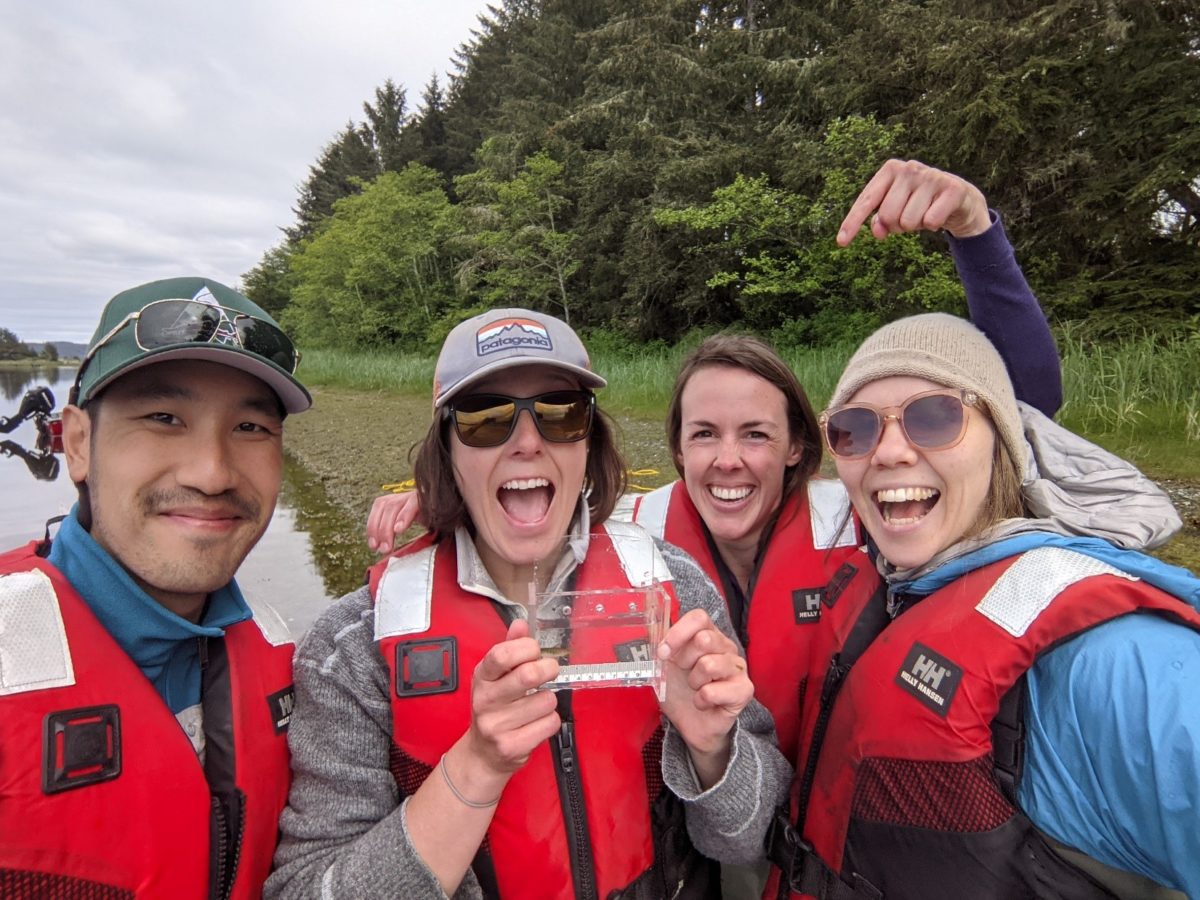
The very first salmon we caught as a team together in the Cluxewe estuary: a Coho fry! Left to right: MSc students Julian Gan, Sara Tremblay-Boyer, Alex Sawyer, and Anna Potapova.
The Nature Trust of BC’s collaborative Enhancing Estuary Resilience Project works with Coastal First Nations and the West Coast Conservation Land Management Program to improve estuary habitat and enhance the long-term sustainability of BC’s fish stocks. As part of this project, Julian Gan, a graduate student in Jonathan Moore’s Salmon Watershed Lab at Simon Fraser University, has been examining the ways in which juvenile salmon use estuaries.
We are excited that he has decided to share with us some of his experiences and photos from the field!
By Julian Gan, Alex Sawyer, and Dr. Jonathan Moore
We started our three-week-long stretch of fieldwork on Vancouver Island at the Cluxewe River estuary near Port McNeill. Known as “Dła̱xsiwè” in Kwak̓wala, the estuary is situated in the territory of the Kwakiutl First Nation, who support this research. Assisting me were my Salmon Watersheds Lab colleagues Alex Sawyer, Sara Tremblay-Boyer, and Anna Potapova. We formed a COVID “work pod” in order to work (and live) together for the duration of the field season.
May 25
On our first day, we walked around part of the estuary with Sherri Labour and Margaret McDougall, who work for Lands and Resources of the Kwakiutl First Nation. They explained the historic and cultural significance of the Dła̱xsiwè to the Kwakiutl; the large runs of Steelhead, dog (Chum), Pink, and Coho Salmon it used to support – of which now only a fraction remain. They described the estuary marsh plants that were traditional foods and how the river has changed due to sediment loading caused by upstream forestry and development.
Sherri and Margaret expressed that their goals for the estuary are “restitution and restoration”. They wish for the estuary to be managed for “long life” and for the return of increased fishing opportunities and fishing stations to preserve and prepare food for their community. Their words and knowledge provided a deep perspective that we carried with us as we worked in the estuary.
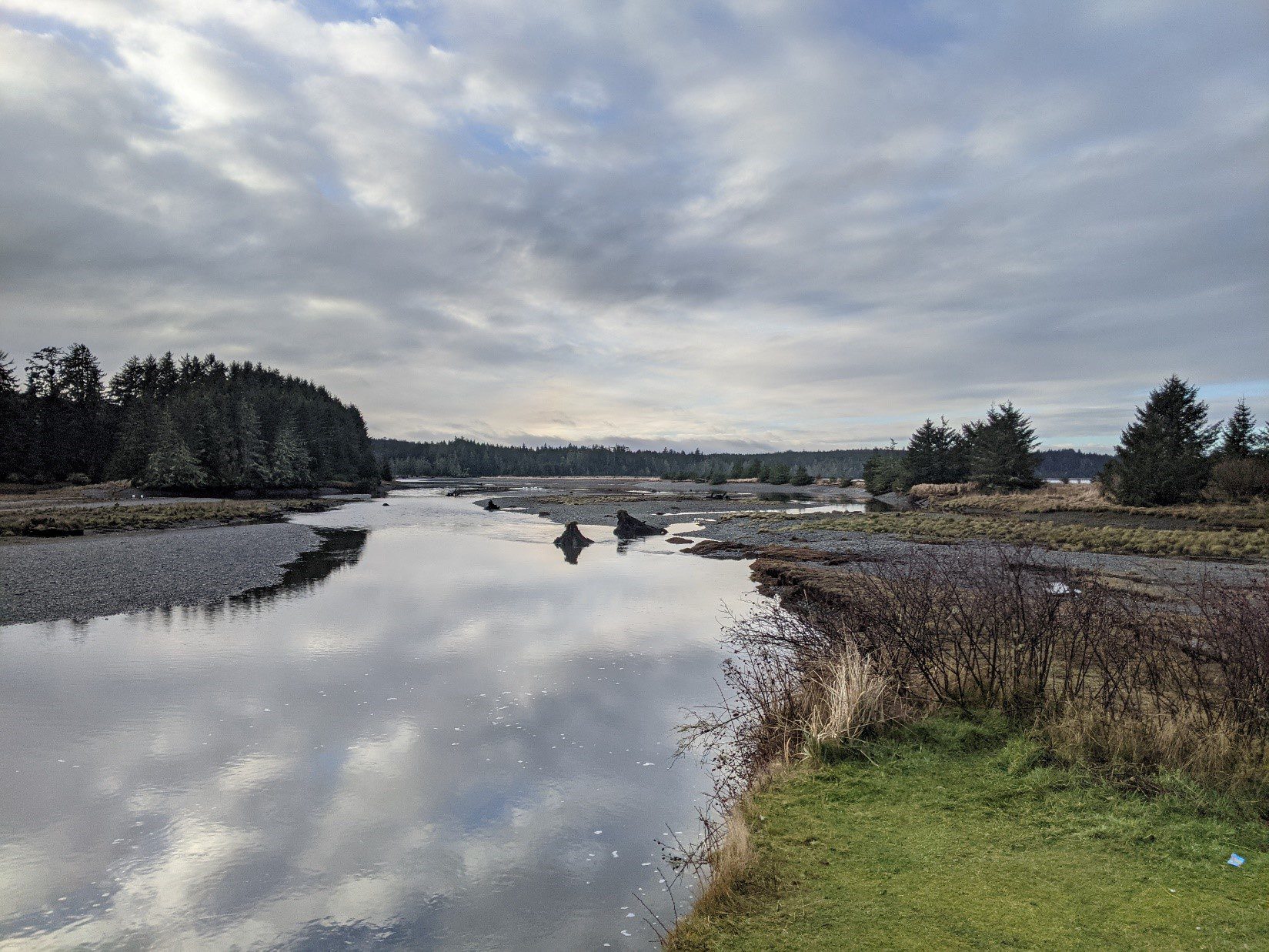
The Cluxewe River follows a natural berm parallel to shore for several hundred meters parallel to the shoreline before opening up into Queen Charlotte Strait.
Due to COVID-19, none of our crew had the opportunity to work together in the field throughout the last year. Thus, we were very excited to get our boots on the ground and nets in the water. We conducted a few practice sets of the beach seine net to get comfortable with driving the boat. After our third attempt, we managed to catch handful of juvenile Coho.
May 26
We have two kinds of nets to sample fish; a 100-foot beach seine that is deployed off our boat, as well as a 45-foot pole seine that is hauled on-foot. The pole seine gives us the opportunity to sample habitats that are too shallow or challenging to access by boat, such as sites in the upper marsh and tidal channels.
Further upstream in mainstem along undercut banks, we caught hundreds of Coho fry in our net. Closer to the mouth of the river, we caught fewer (but bigger) smolts. Common fish caught alongside salmonids were Three-spine Sticklebacks, Sculpins, and Flatfish.
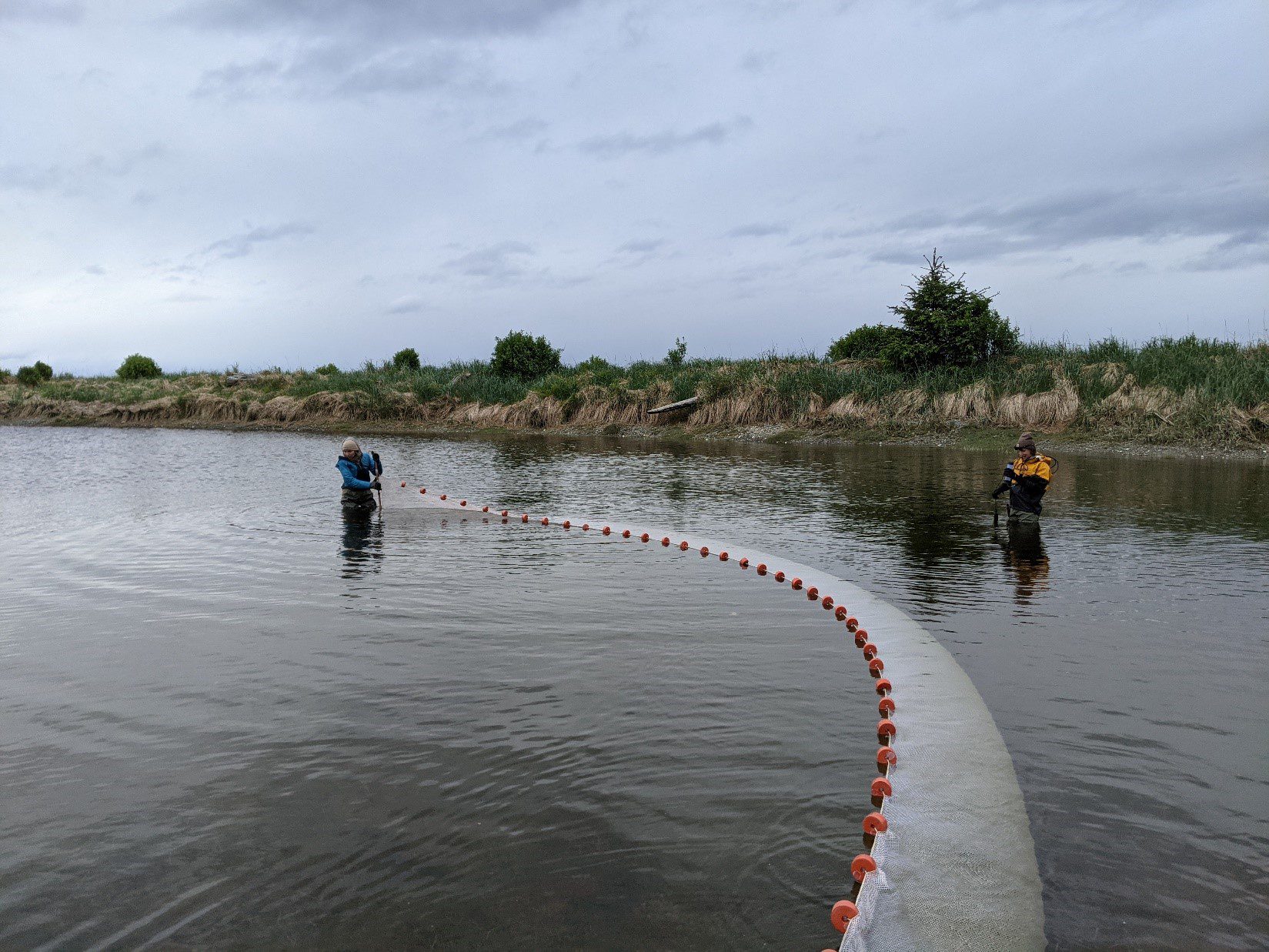
Anna pulling one end of the pole seine through the water. I (Julian) am holding the other end as the anchor point. Meanwhile, Sara is taking water quality measurements: temperature, salinity, pH, and dissolved oxygen.
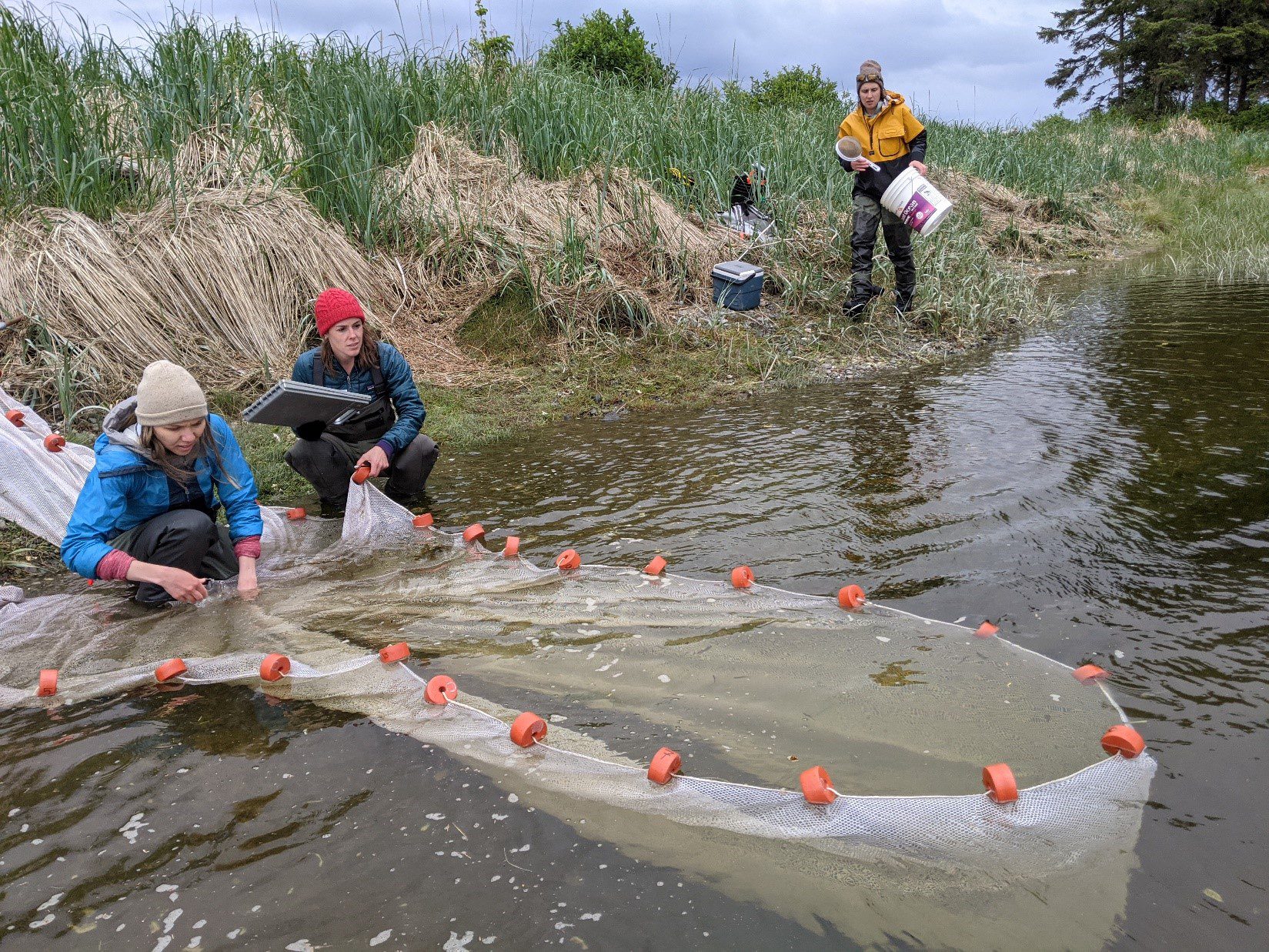
Pulling in the pole seine onto shore, with salmon fry visible in the net.
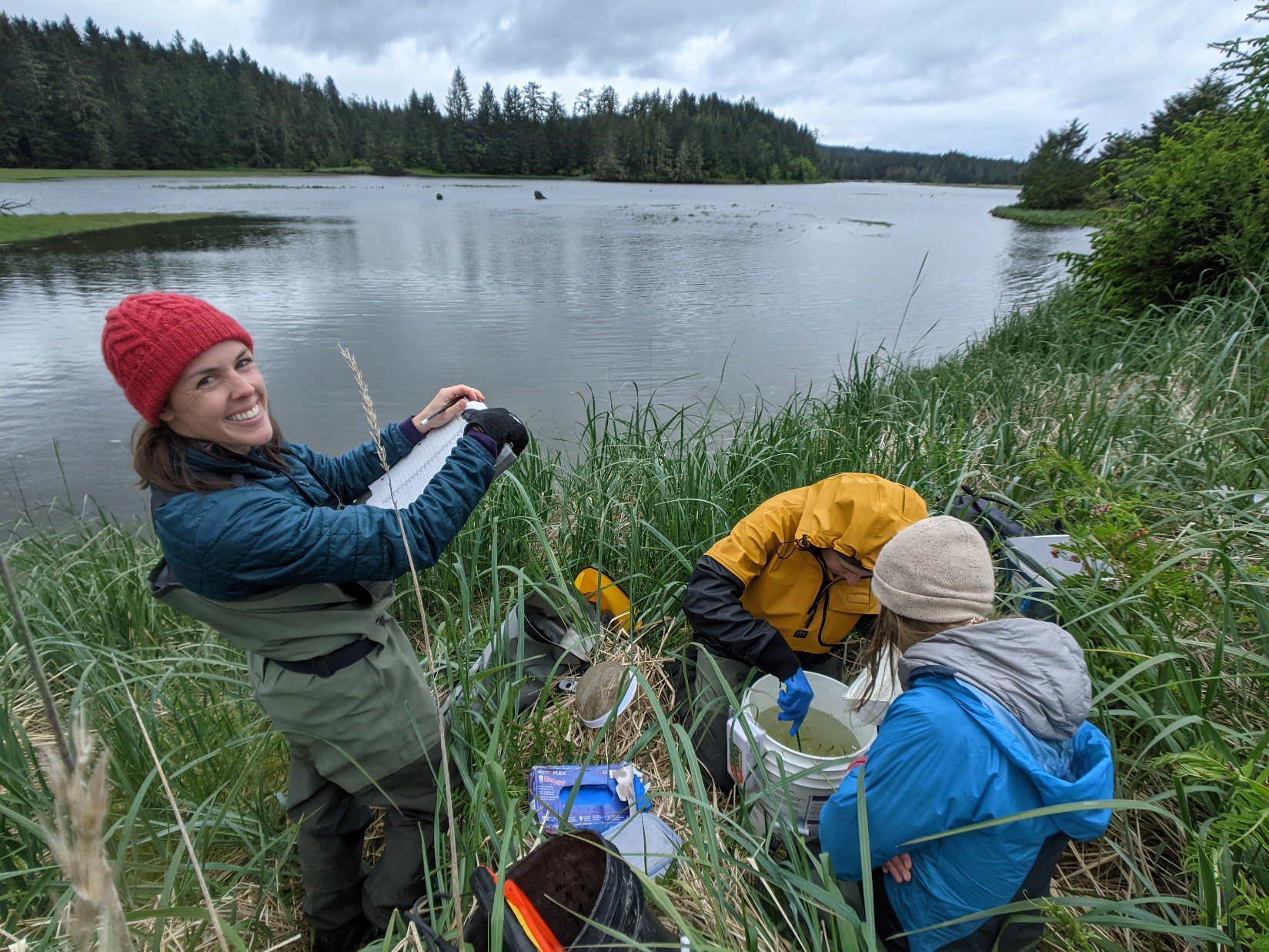
Alex is recording data whilst Sara and Anna are measuring the fish we caught in our pole seine.
May 27
On our third and final day in the Cluxewe estuary, we were privileged to be joined by Charles Wilson, a Kwakiutl Fieldworker-Guardian. He shared with us a wealth of knowledge about the history of estuary, the Kwakwaka‘wakw peoples, and field expertise.
Despite the inclement weather, we were still successful in catching a variety of fish, including some Coho yearlings, a Dolly Varden, and juvenile Steelhead trout!
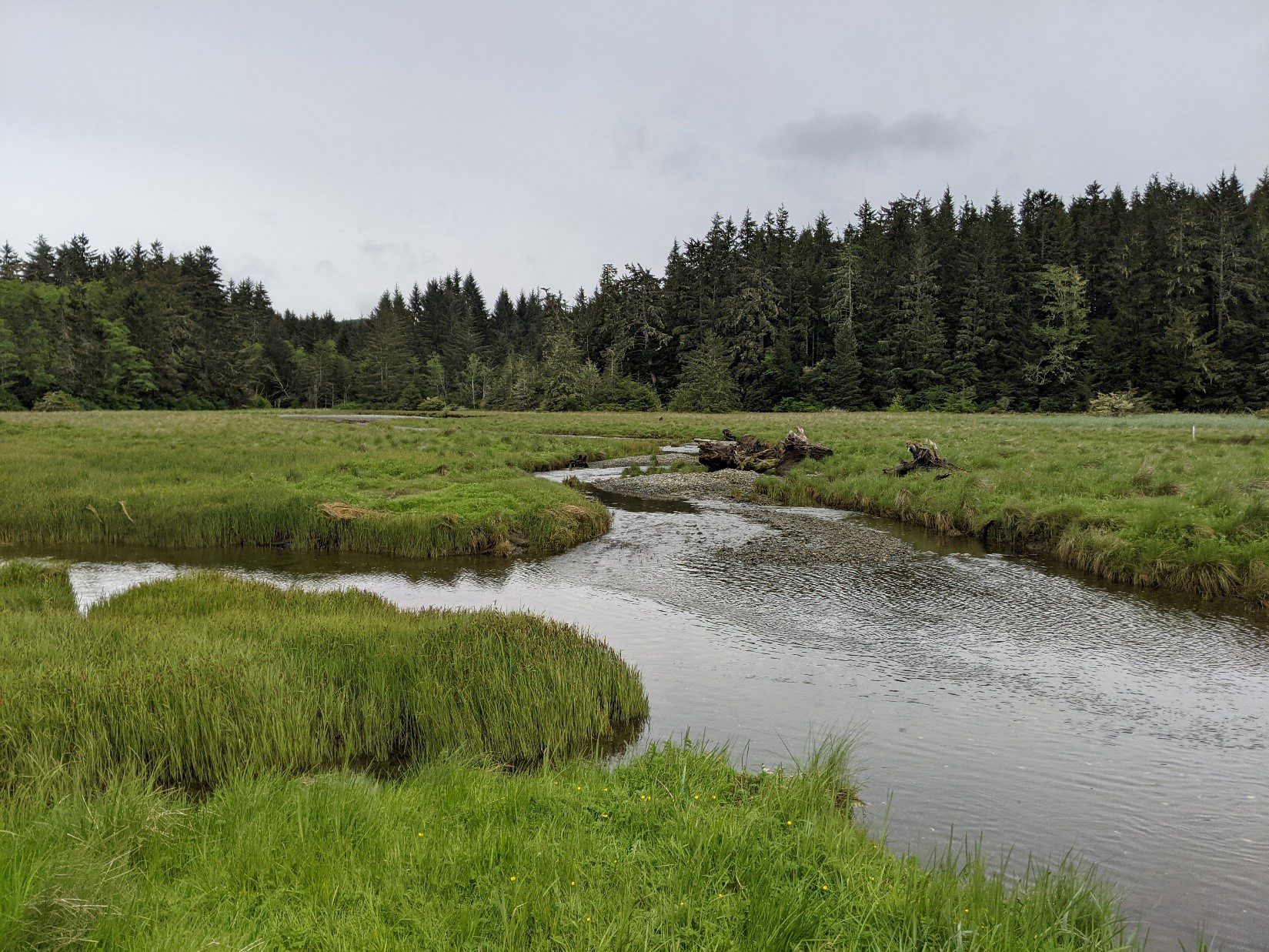
The upper marsh area of the estuary is filled with narrow channels, some of which are only wetted during flood tides. The vegetation is dominated by Lyngby’s sedge (Carex lyngbyei) and Pacific silverweed (Argentina egedei).
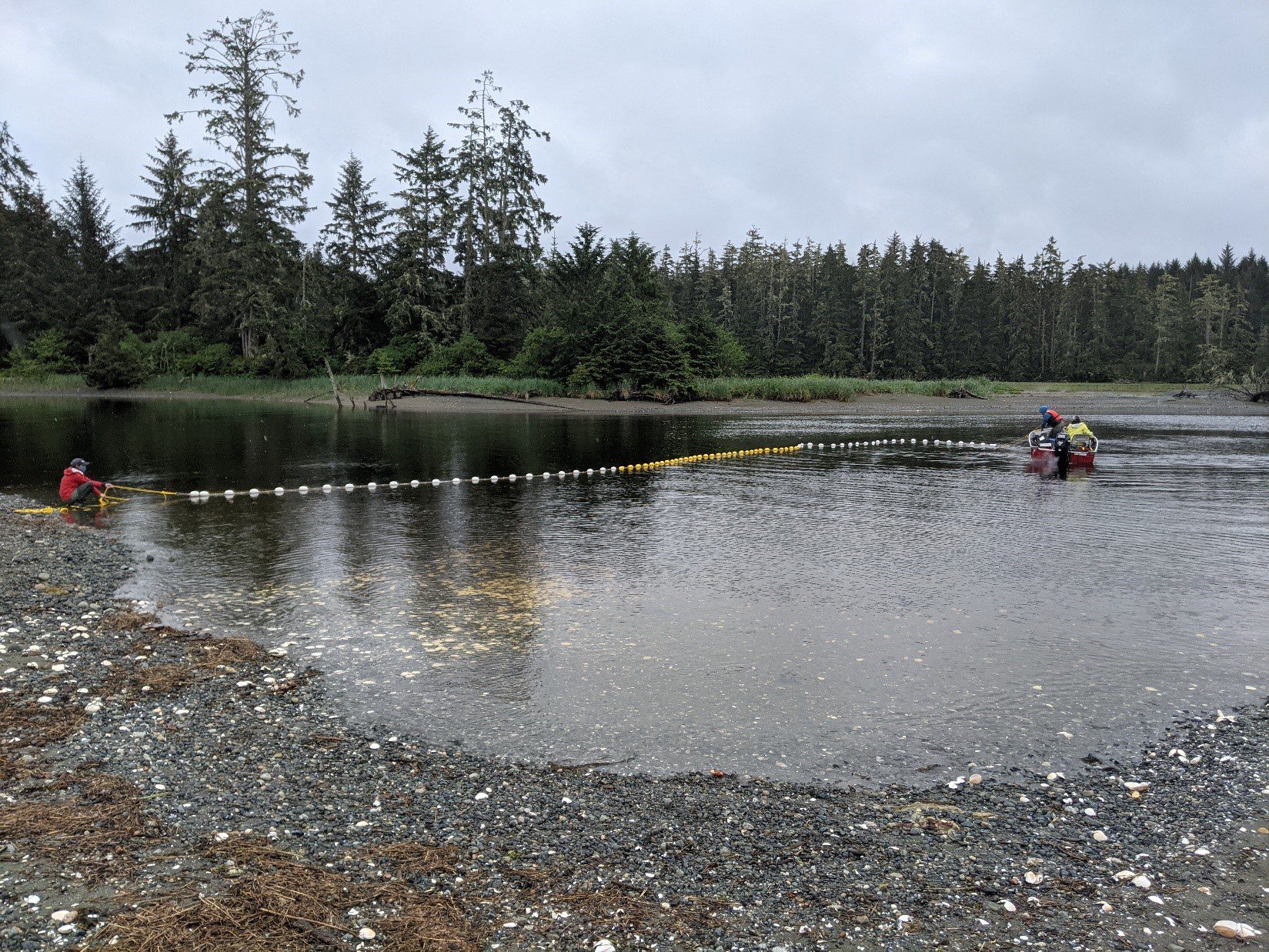
Kwakiutl Guardian, Charles Wilson setting the seine on the beach near the mouth of the estuary. Alex is holding down one end of the net, whilst Anna is on-board helping with deployment.
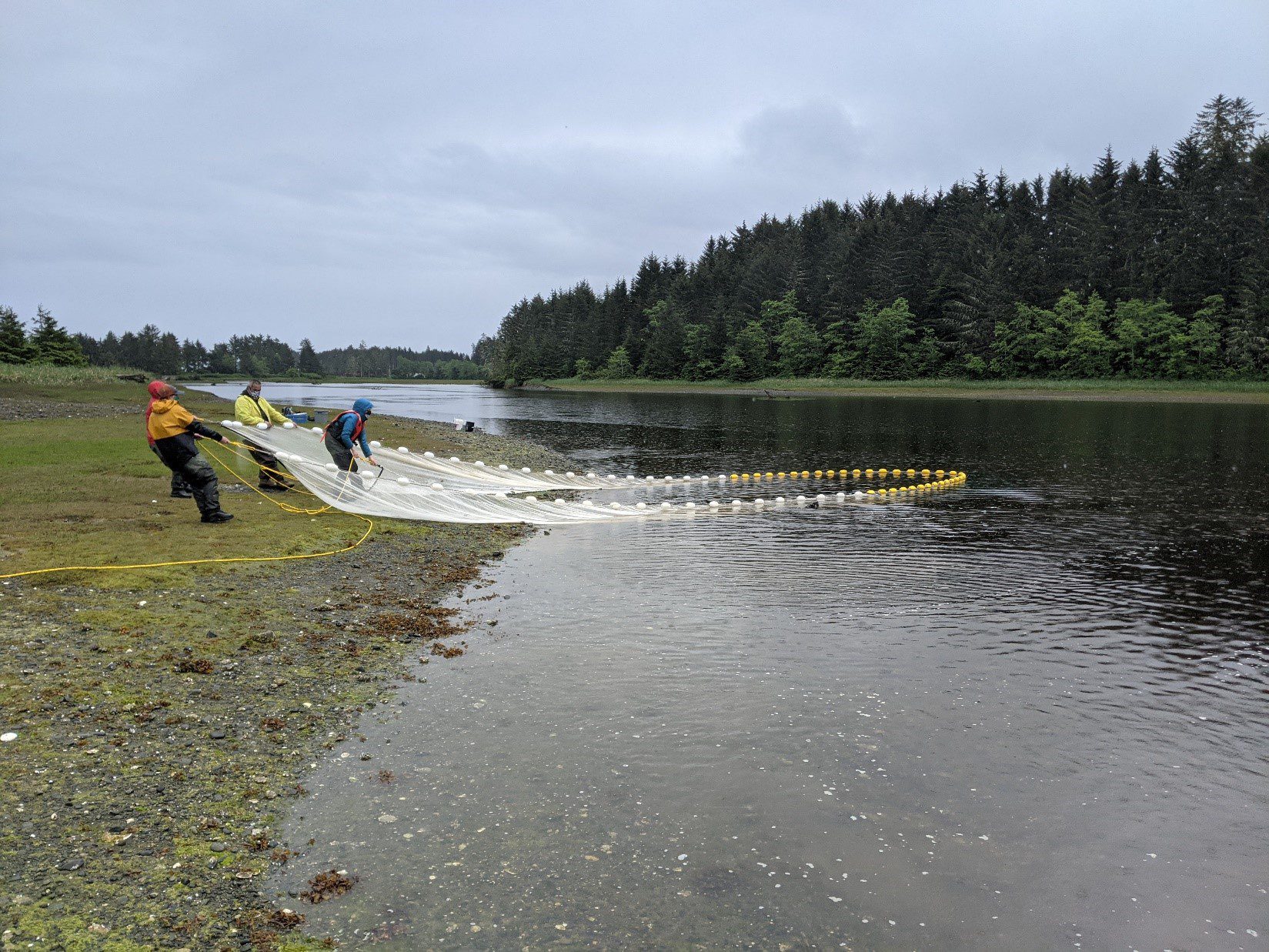
It’s a team effort pulling in the beach seine!
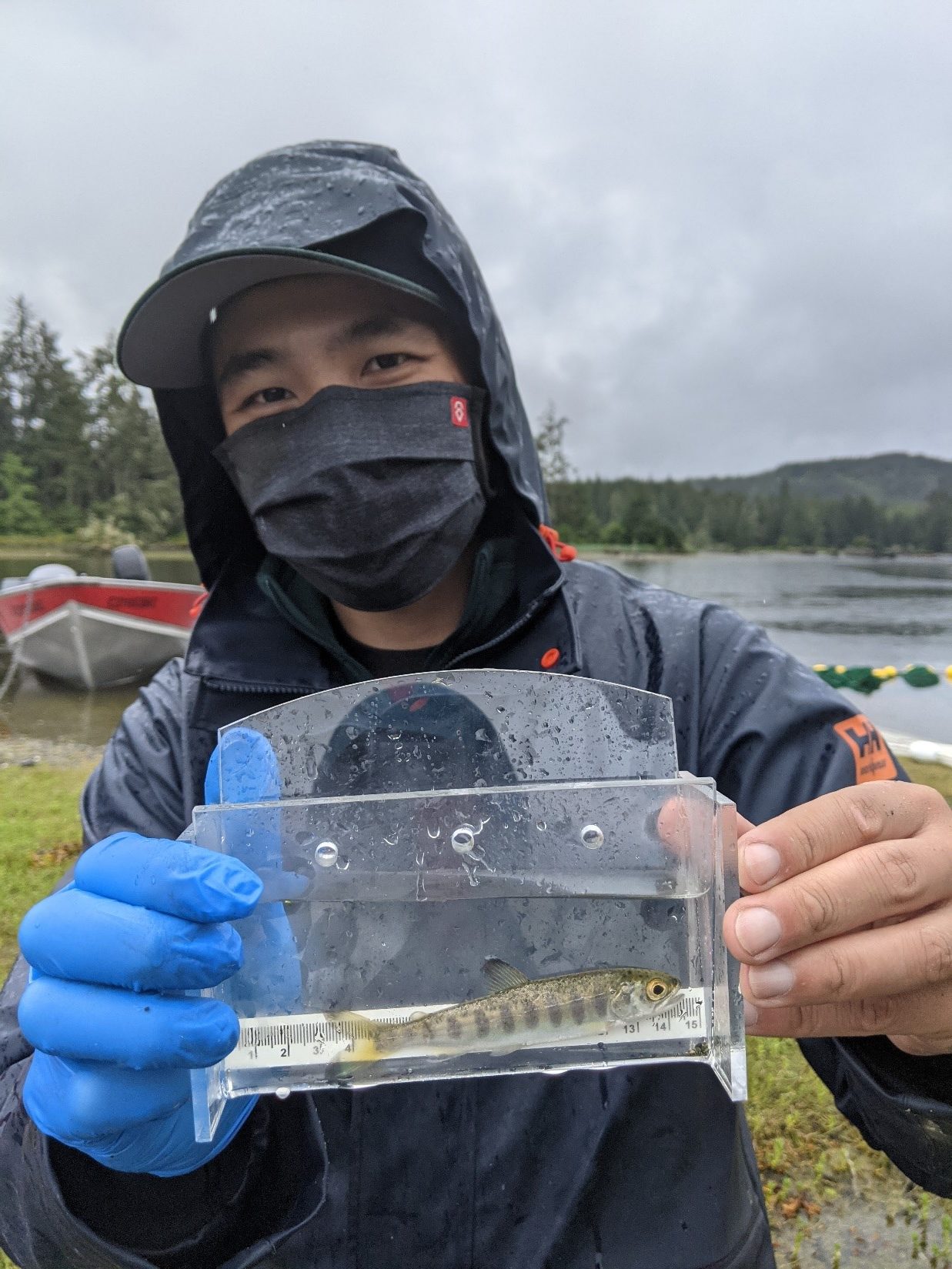
A Coho smolt (i.e., a yearling) that we found closer to the mouth of the estuary.
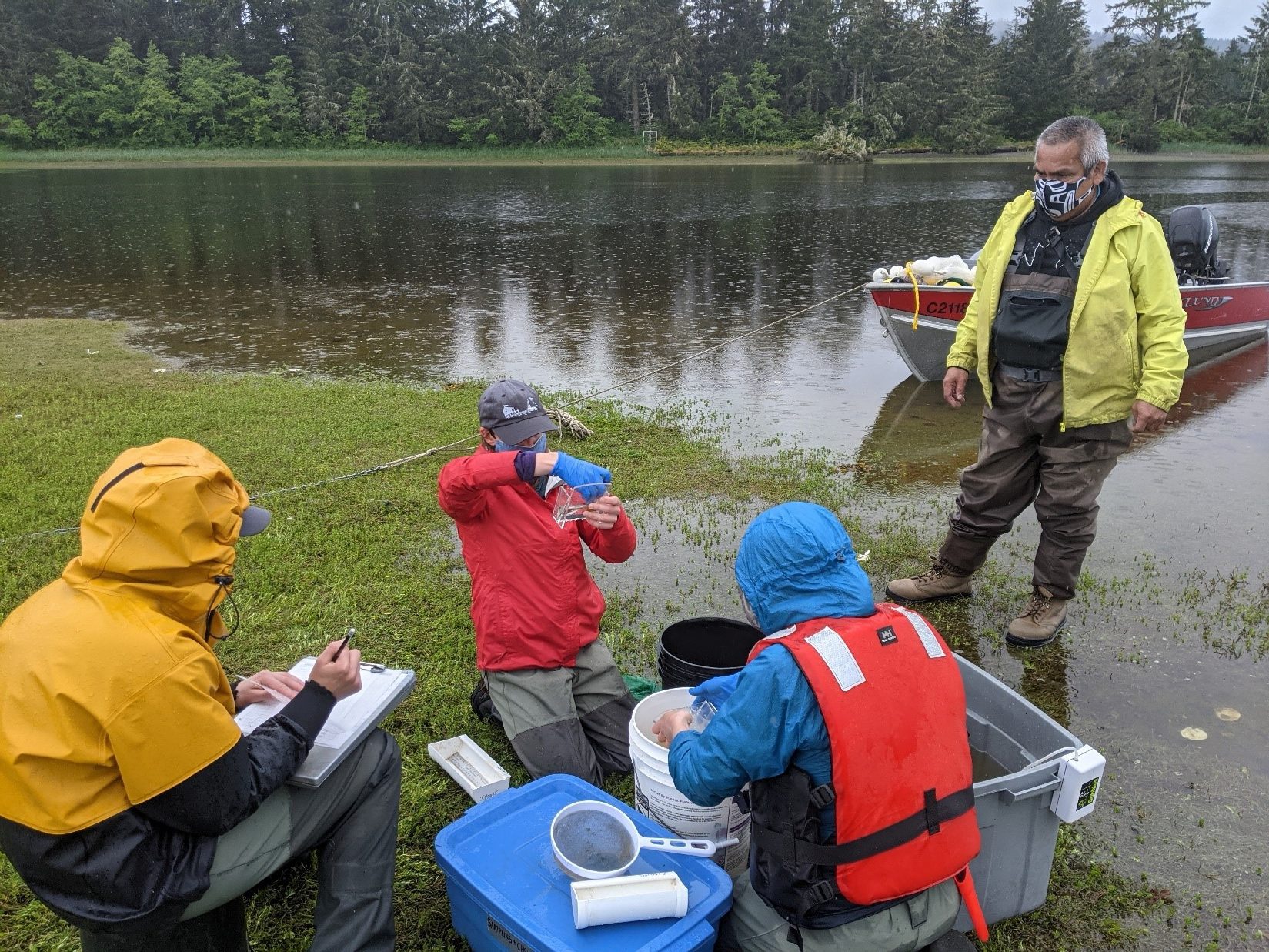
Measuring our catch.
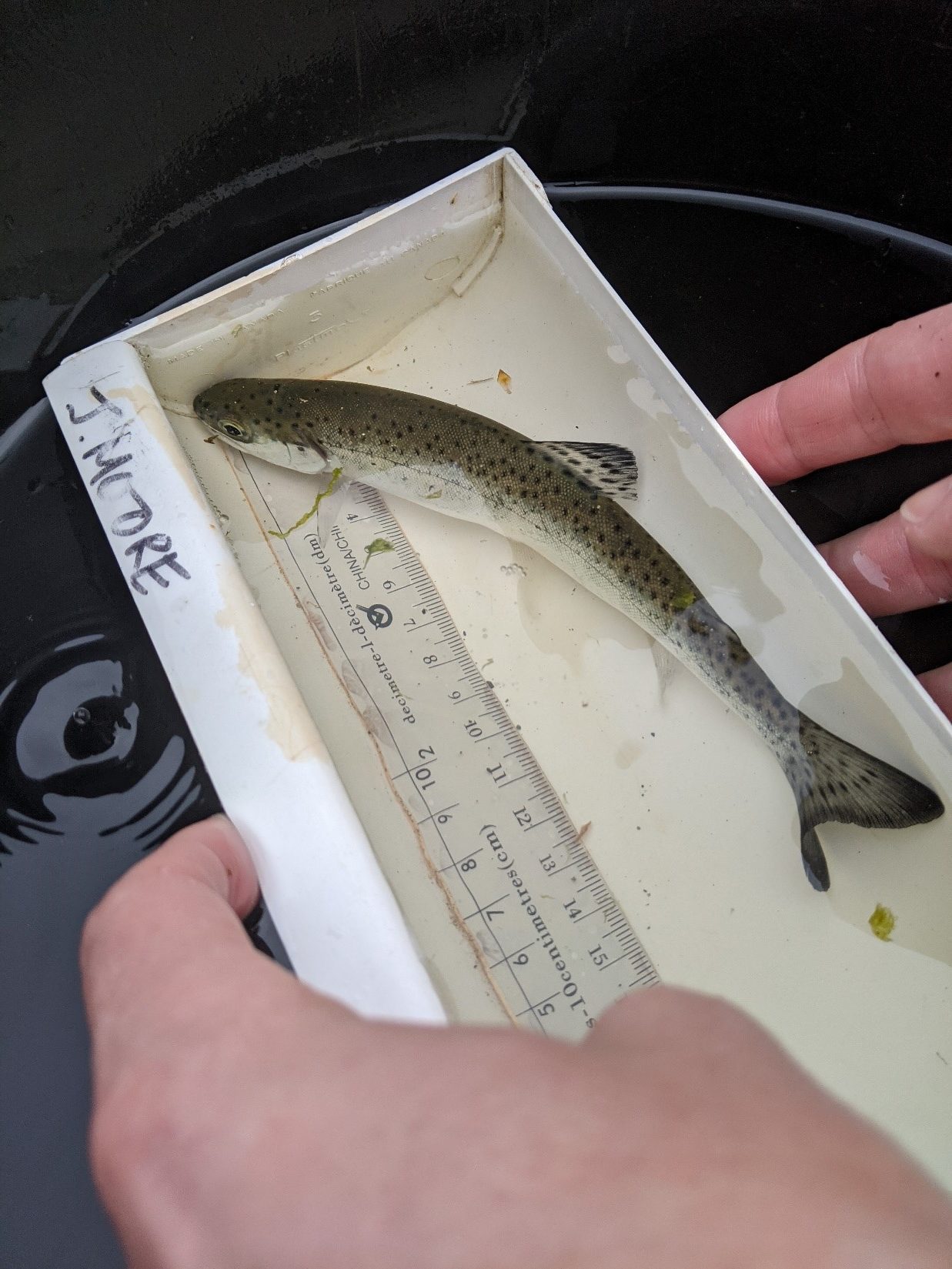
Juvenile steelhead trout – a rare catch for us!
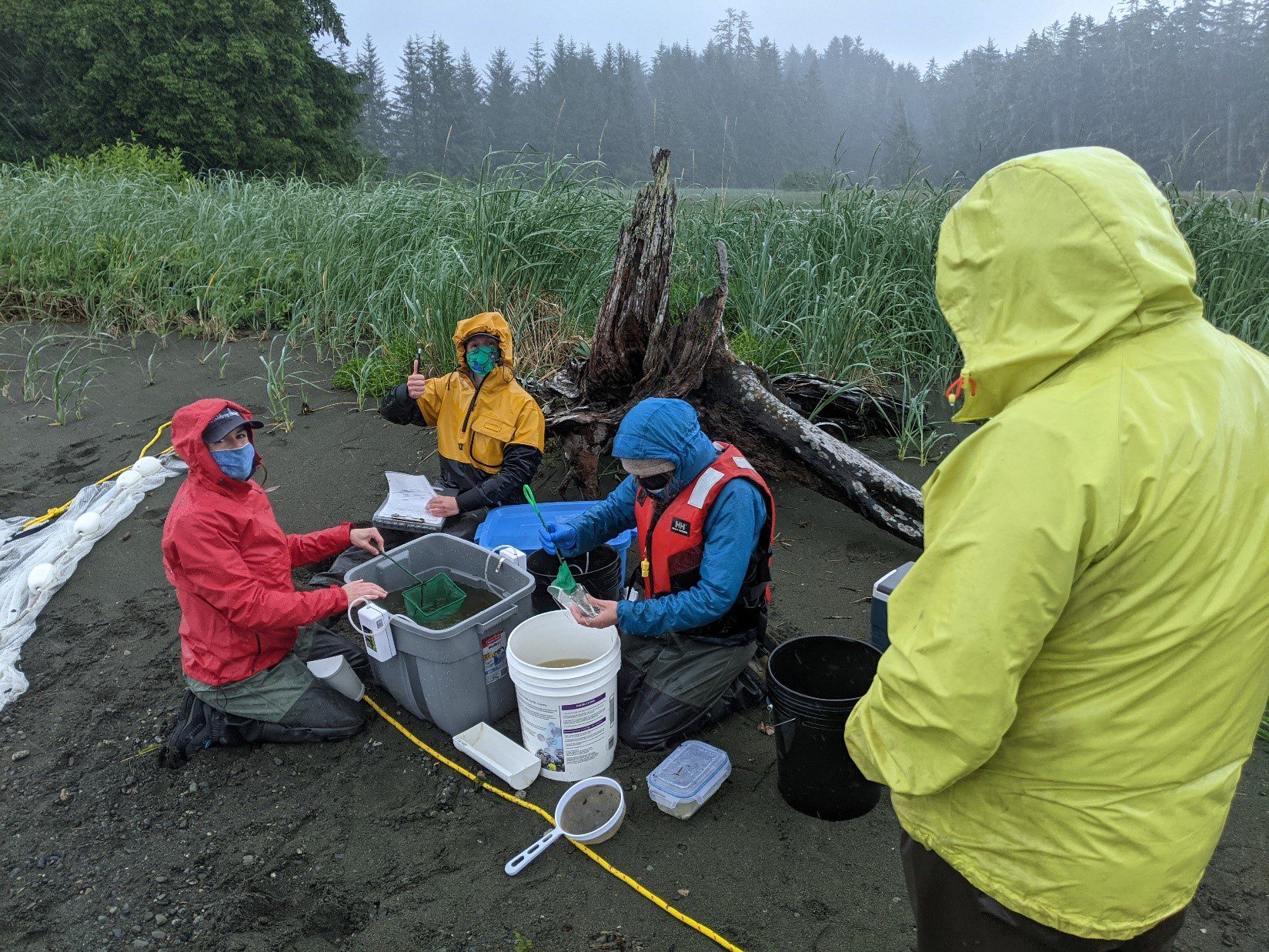
Charles is watching on whilst we are caught in a flash downpour (he is chuckling whilst we are bemoaning the rain). Thankfully, it was the last site of the day, and we didn’t have to trek too far back to our cabin to dry off and warm up!
Our first visit to the Cluxewe River estuary was truly unforgettable. Not only did we have a fantastic time searching for – and catching – juvenile salmon to learn about their use of the estuary, but getting the opportunity to work with the Kwakiutl Nation provided a deep grounding and context for this project. We are very grateful to the Kwakiutl Nation and The Nature Trust of BC for providing this incredible research opportunity.
